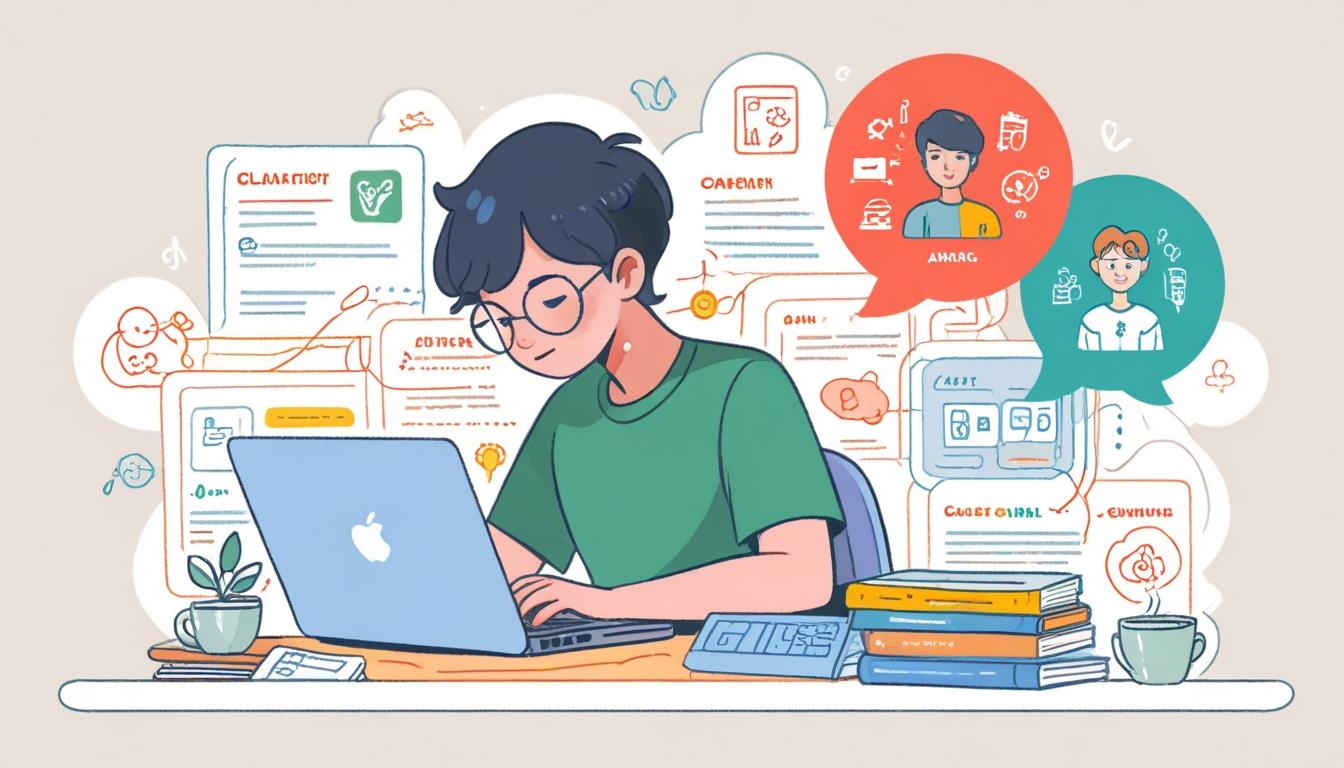Artificial intelligence is reshaping college students’ academic work by improving efficiency and creativity through various tools, while also raising important ethical questions about originality, transparency, and responsible use.
Artificial intelligence (AI) has become an indispensable tool for college students, fundamentally altering how they approach academic work, from essay writing to presentation design. According to a recent article from saycampuslife.com, AI is transforming education by enhancing efficiency and creativity, while simultaneously posing ethical challenges that require careful navigation.
AI’s integration into higher education extends beyond student use; institutions employ predictive analytics to enhance student success and adaptive learning platforms to personalise study experiences. For students, popular AI applications include ChatGPT for drafting essays, Grammarly for proofreading, and Canva for creating visually appealing slides. These tools save time and improve quality, enabling students to focus more on content and ideas.
The article categorises AI tools used by students into four main types. Content-generation tools like ChatGPT and Jasper produce human-like text to aid with brainstorming and drafting. Research tools such as Elicit assist in synthesising academic papers quickly, while Google Scholar utilises AI to suggest relevant studies. Proofreading and style-enhancement applications such as Grammarly and Hemingway Editor improve grammar and clarity. Lastly, visual and presentation tools like Canva and Visme leverage AI for impactful slide designs and graphics.
While these tools offer valuable support, the article emphasises the importance of ethical use. Students are urged to avoid over-reliance on AI, ensuring that their work reflects their own ideas and voice. AI should assist rather than replace original thought. There are concerns about bias and factual errors in AI-generated content, so rigorous fact-checking is necessary before including such material in academic submissions. Transparency is also vital; students should disclose when AI tools have been used and comply with their institution’s policies on AI in coursework.
Proper attribution of AI contributions is compared to citing any other research source. For example, when using ChatGPT, students might cite it as: “OpenAI. (2023). ChatGPT language model (August Version). Accessed [date].” Failure to acknowledge AI’s role in generating content could be considered plagiarism.
In the realm of presentations, AI-powered platforms can speed up the creation of appealing visuals. However, the article cautions against overusing AI-generated graphics that may distract from the core message. Students should select visuals thoughtfully and ensure that their presentations remain coherent and authentic.
The article provides illustrative case studies to distinguish ethical from unethical AI practices. Ethical use includes employing Grammarly to polish language while retaining original ideas or crediting AI-generated artwork. In contrast, submitting a fully AI-generated essay as one’s own or presenting unchecked AI-sourced data exemplifies unethical behaviour.
To use AI responsibly, the article recommends best practices such as verifying all AI-generated information, treating AI as an aid rather than a creator, disclosing AI’s role to instructors, and staying informed about evolving guidelines and technologies. This approach helps maintain academic integrity and fosters originality.
Looking ahead, AI’s role in education is expected to expand further with intelligent tutoring systems, AI-driven career counselling, and personalised learning tools becoming more common on campuses worldwide. The balance between innovation and ethics remains critical to harness AI’s benefits while upholding standards of intellectual honesty.
In summary, saycampuslife.com highlights that AI is transforming college education, offering unparalleled opportunities alongside important ethical considerations. By embracing AI as a collaborative resource and committing to transparency and integrity, students can enhance their academic experience while preserving their creativity and credibility.
Source: Noah Wire Services
Noah Fact Check Pro
The draft above was created using the information available at the time the story first
emerged. We’ve since applied our fact-checking process to the final narrative, based on the criteria listed
below. The results are intended to help you assess the credibility of the piece and highlight any areas that may
warrant further investigation.
Freshness check
Score:
8
Notes:
The narrative discusses current AI tools (e.g., ChatGPT, Grammarly, Canva) widely used in 2023 and beyond, with references to the 2023 ChatGPT version citation format, indicating recent information. No dated or obsolete references or personnel changes appear. The theme of expanding AI use in education aligns with ongoing trends up to early 2025, suggesting up-to-date content. There is no indication this is a mere press release, which would usually imply higher freshness but less critical analysis.
Quotes check
Score:
10
Notes:
The narrative contains a suggested citation for ChatGPT usage but no direct quotes attributed to individuals or unique statements requiring source tracing. Since no direct quotes needing verification are present, this increases confidence that no recycled quote misattributions exist.
Source reliability
Score:
5
Notes:
The narrative originates from saycampuslife.com, which is less known and lacks the established editorial reputation of major outlets like Reuters or BBC. This limits confidence slightly, as independent vetting and editorial standards are unclear. However, the content aligns well with broadly accepted facts and AI tool usage, lending moderate credibility.
Plausability check
Score:
9
Notes:
The claims about AI tools in education and ethical considerations are highly plausible and consistent with current academic discourse on AI’s role in learning. Descriptions of AI applications and recommended best practices correspond with widely recognised usage and institutional policies in 2024–2025. No extraordinary or unverifiable claims appear.
Overall assessment
Verdict (FAIL, OPEN, PASS): PASS
Confidence (LOW, MEDIUM, HIGH): HIGH
Summary:
The narrative presents a fresh, relevant, and plausible overview of AI’s role in college education as of 2024–2025, with no outdated information or questionable quotations. Originating from a less well-known site reduces source reliability score somewhat, but the consistency with known facts and trends supports a high confidence in accuracy and reliability.













